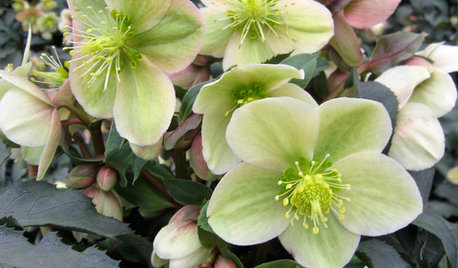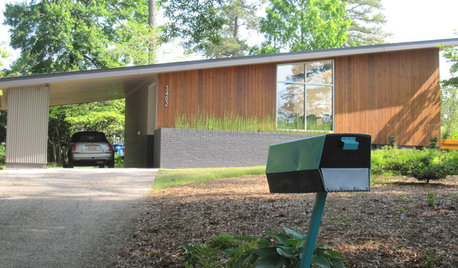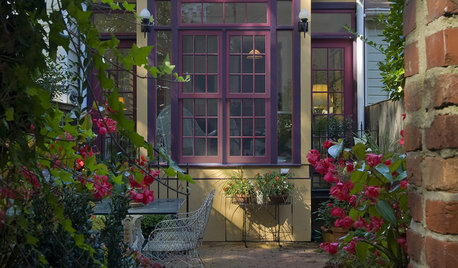Ivory Prince
gardengal48 (PNW Z8/9)
18 years ago
Related Stories

WINTER GARDENINGGreat Design Plant: Gold Collection Hellebores Perform Like Stars
Exciting colors, longer bloom times, forward-facing flowers ... These hybrids leave old hellebores in the dust
Full Story
COLORPick-a-Paint Help: How to Quit Procrastinating on Color Choice
If you're up to your ears in paint chips but no further to pinning down a hue, our new 3-part series is for you
Full Story
MIDCENTURY STYLEFollow One Man’s Midcentury-Mailbox Dream
An ill-fitting mailbox leads a determined dad on a quest — and possibly to a new business
Full Story
FUN HOUZZEverything I Need to Know About Decorating I Learned from Downton Abbey
Mind your manors with these 10 decorating tips from the PBS series, returning on January 5
Full Story
FUN HOUZZHouzz Call: Tell Us About Your Dream House
Let your home fantasy loose — the sky's the limit, and we want to hear all about it
Full Story
COLORPurple on the Outside
Are shades of grape, eggplant, lavender and plum the most daring colors for a home’s exterior?
Full Story
HOUZZ TOURSMy Houzz: Goodwill and Good Taste in a Grand Colonial
Welcoming the community for charity fundraisers and more, this Massachusetts home radiates graciousness
Full Story
PETSHouzz Pets Survey: Who Rules the House — Dogs or Cats?
New data shows that pets make people happy, and pet owners love spending big to return the favor
Full Story
ORANGEFresh Start: Paint the Front Door
Go for it! Add instant curb appeal with a great coat of orange, blue, red, yellow, green, purple or black on the door
Full Story
DECORATING GUIDESSo Your Style Is: French Country
With an artful balance between earthy and chic, French country style infuses a home with incomparable warmth and welcome
Full StorySponsored






karen__w z7 NC
razorback33
Related Professionals
Piqua Landscape Architects & Landscape Designers · River Forest Landscape Architects & Landscape Designers · Stoughton Landscape Contractors · Ellicott City Landscape Contractors · Eureka Landscape Contractors · Monterey Landscape Contractors · Natick Landscape Contractors · Tacoma Landscape Contractors · West Haverstraw Landscape Contractors · Delaware County Siding & Exteriors · Bolingbrook Siding & Exteriors · Colorado Springs Siding & Exteriors · Fairfax Siding & Exteriors · New Britain Siding & Exteriors · Tooele Siding & Exteriorskaren__w z7 NC
jgwoodard
gardengal48 (PNW Z8/9)Original Author
stonybrook
Tim_M
gardengal48 (PNW Z8/9)Original Author
Tim_M
gardengal48 (PNW Z8/9)Original Author
Tim_M
gardengal48 (PNW Z8/9)Original Author
oldroser
morz8 - Washington Coast
geoforce
gardengal48 (PNW Z8/9)Original Author
evonnestoryteller